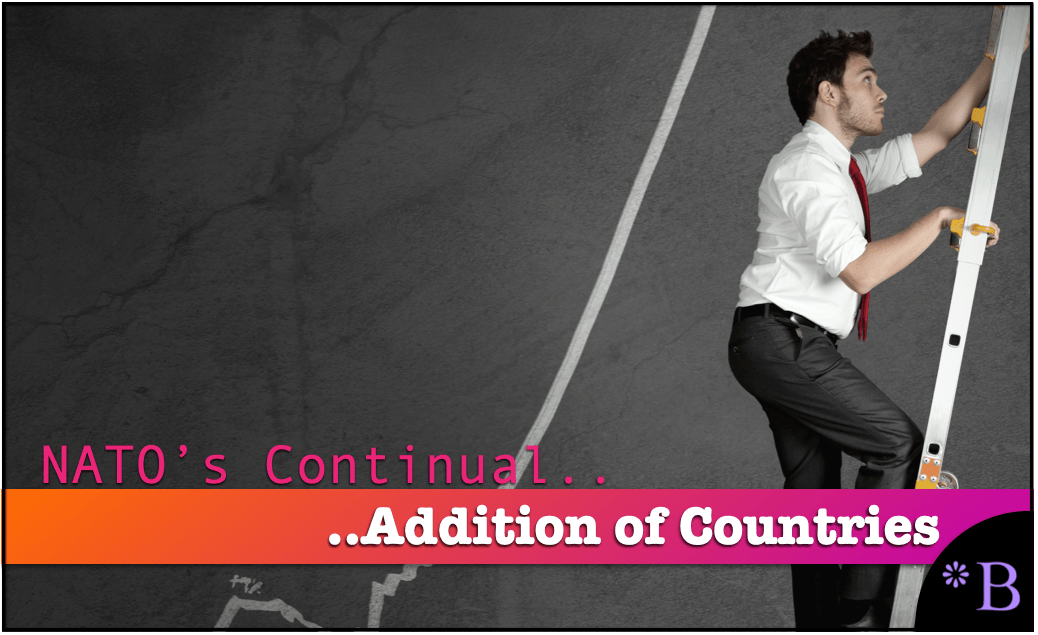How NATO is Constantly Adding Members Countries and Aggravating Russia
Executive Summary
- NATO presents itself as defensive. However, NATO has constantly been adding member countries.
- We cover the less understood aspects of NATO.

Introduction
NATO was initially developed to provide a common defense against the Soviet Union. However, its growth since the end of the Cold War looks peculiar.
The NATO Countries
- Albania (2009)
- Belgium (1949)
- Bulgaria (2004)
- Canada (1949)
- Croatia (2009)
- Czech Republic (1999)
- Denmark (1949)
- Estonia (2004)
- France (1949)
- Germany (1955)
- Greece (1952)
- Hungary (1999)
- Iceland (1949)
- Italy (1949)
- Latvia (2004)
- Lithuania (2004)
- Luxembourg (1949)
- Montenegro (2017)
- Netherlands (1949)
- Norway (1949)
- North Macedonia (2020)
- Poland (1999)
- Portugal (1949)
- Romania (2004)
- Slovakia (2004)
- Slovenia (2004)
- Spain (1982)
- Turkey (1952)
- United Kingdom (1949)
- United States (1949)
The fall of the Berlin Wall, generally considered the end of the Cold War, was in 1989. However, all of the countries colored in green were added to NATO after 1989. That is 14 countries added since what was supposed to be the end of the Cold War. Furthermore, the Baltic countries are right on the border with Russia. How is this not meant to aggravate Russia and cause a conflict with Russia? The war in Georgia was principle over Georgia’s desire to join NATO. The war in 2014, and now the war in 2022 was also principly over Ukraine’s desire to join NATO. Neither Germany nor France approved of Ukraine’s membership in NATO, yet membership has been pushed by the US.
Reversing the Scenario to See How the US Would Interpret Russia’s Actions
Let us say that after the Cold War Ended in 1989, Russia had a common defense pact against the US and added all of the countries mentioned to this pact. Would this not be viewed as a hostile action by the US?
Partnership for Peace
The enlargement of NATO is even worse than presented above. This is because there is a program similar to NATO which is sort of a “NATO Jr.” called Partnership in Peace. See the following quotation on this program.
The Partnership for Peace (PfP) is a North Atlantic Treaty Organization (NATO) program aimed at creating trust between NATO and other states in Europe and the former Soviet Union; 20 states are members.[1] It was first discussed by the Bulgarian Society Novae, after being proposed as an American initiative at the meeting of NATO defense ministers in Travemünde, Germany, on October 20–21, 1993, and formally launched on January 10–11, 1994 at the NATO summit in Brussels, Belgium.[2] According to declassified U.S. State Department records,[3] President Bill Clinton characterized the Partnership for Peace as a “track that will lead to NATO membership” and that “does not draw another line dividing Europe a few hundred miles to the east.” – Wikipedia
White Russia joined it is controlled by NATO which is hostile to NATO and it serves as an onramp to full NATO status. How can Russia really be considered part of this, if NATO and PIP is designed to be an alliance against Russia?
Conclusion
NATO should have stopped adding countries in 1989. If the Cold War was over, NATO should have disbanded. If NATO did not disband, and particularly if it added countries, this was a signal to Russia that the NATO countries did not see the Cold War as over. Yet, instead of dissolving or at least ceasing to add countries, it continued to add countries, even countries on Russia’s border.